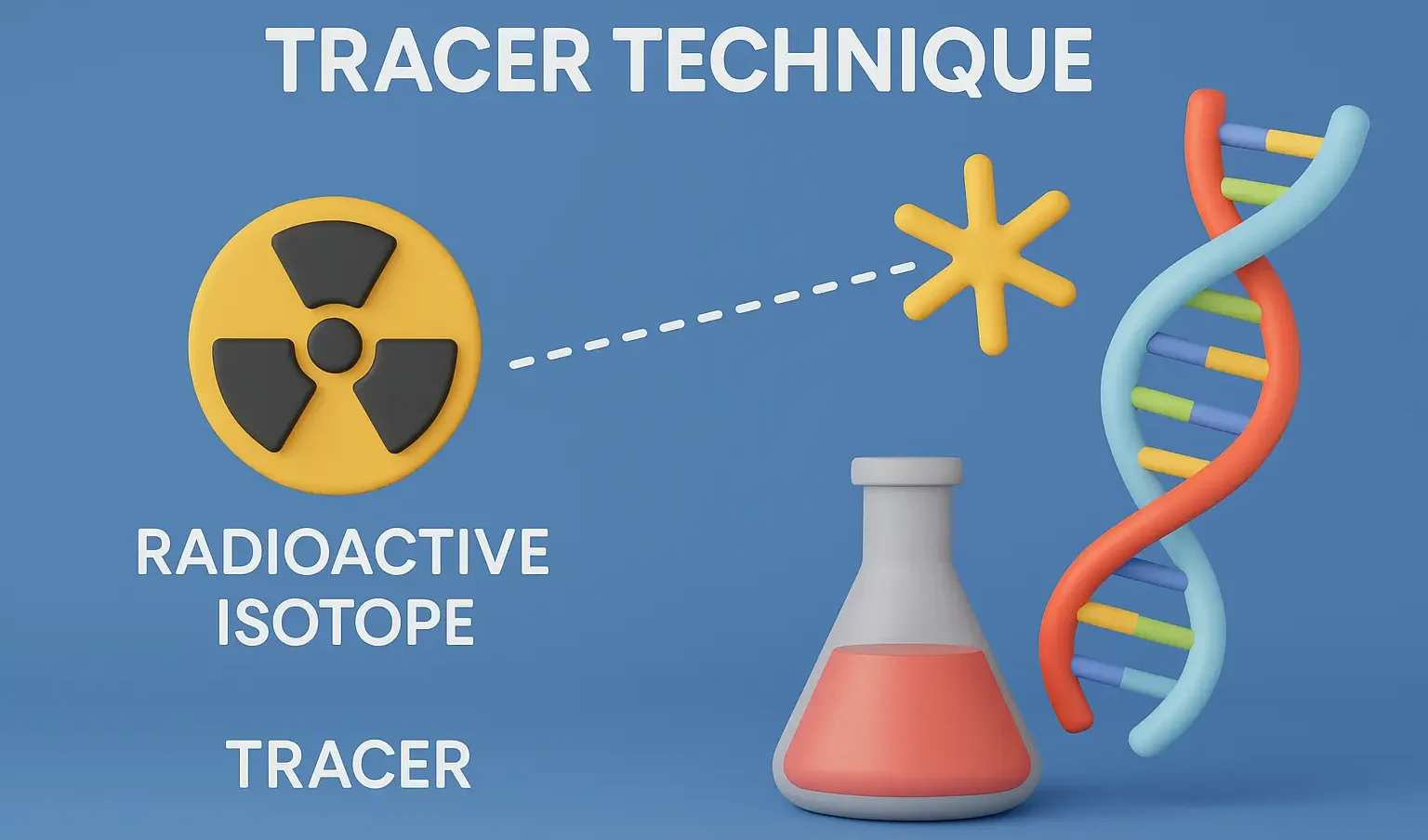- Tracer Technique involves using radioactive or stable isotopes to track the path of elements through metabolic processes, enabling detailed analysis of biochemical reactions.
- The tracer technique is the backbone of biogenetic studies involving radioisotopes.
Principle of Tracer Technique:
- A radioactive isotope is incorporated into a molecule of interest, allowing researchers to track the molecule’s movement, chemical transformation, and fate in living systems without altering its normal biological function.
Advertisements
Steps in the Tracer Technique:
- Selection of Isotope: The isotope chosen should have a half-life appropriate for the duration of the study and a radiation type that can be easily detected.
- Labeling of the Molecule: The molecule of interest is chemically tagged with the isotope (e.g., labeling glucose with C-14).
- Introduction into the System: The labeled molecule is introduced into the biological system (e.g., injection into an organism or addition to a culture medium).
- Tracking the Isotope: The isotope is tracked using appropriate detectors (e.g., scintillation counters, autoradiography) to monitor its distribution, transformation, and metabolic role.
Advantages:
- Non-intrusive: Molecules can be traced without significantly disrupting cellular processes.
- Highly sensitive: Detects even minute quantities of radioactive material.
- Specificity: Allows the study of specific pathways or molecules in complex biological systems.
Advertisements

